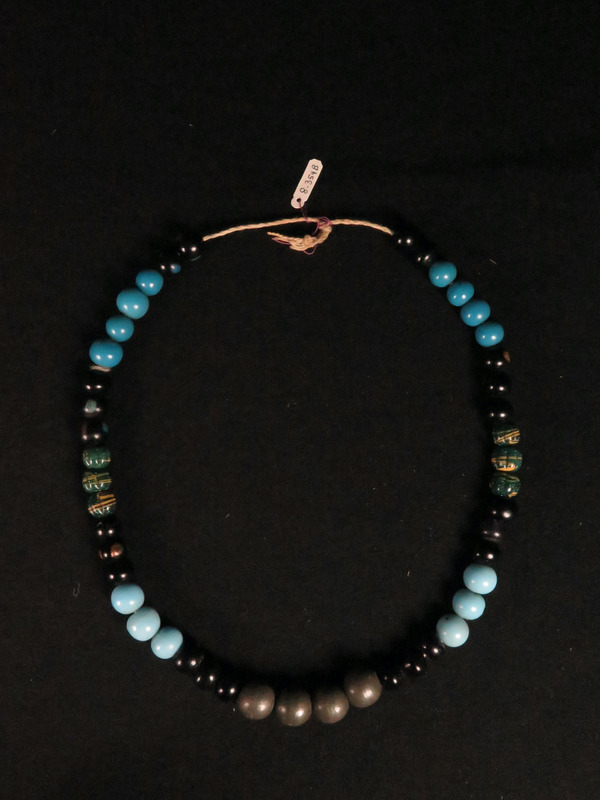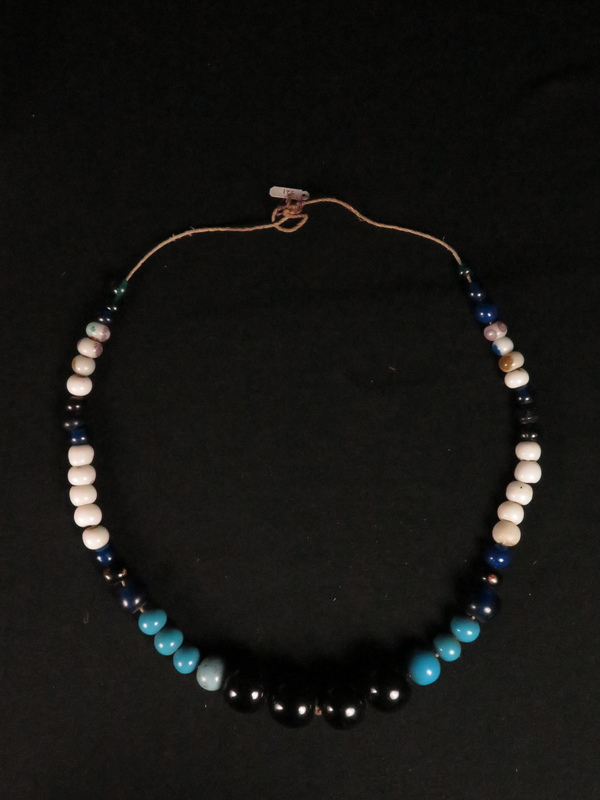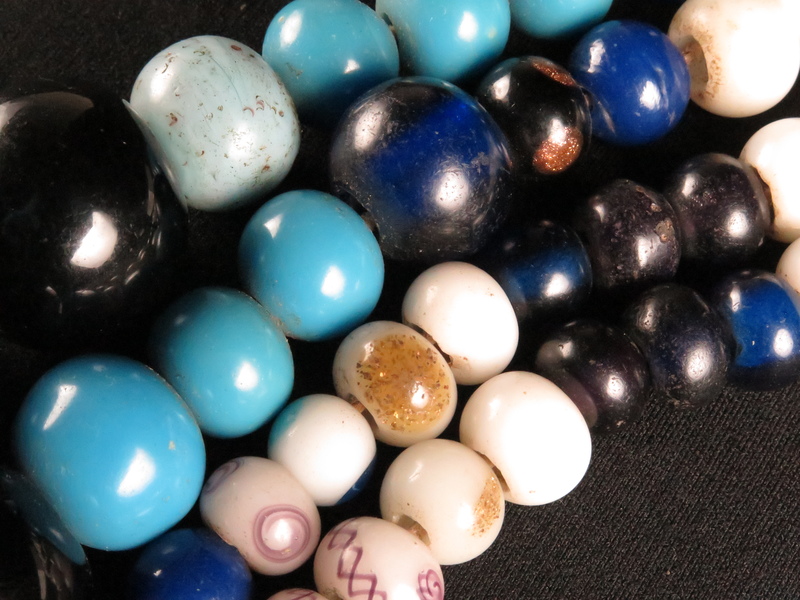Trade as a Way of Life
Trade has always been a fundamental part of Ainu society, and ancient trade networks between the peoples of Ainu Mosir, Japan, and the continent date back thousands of years. It was during the late medieval and early modern periods, however, when Ainu trade reached its zenith, and the Ainu, along with their Nivkh (Gilyak) and Ulcha (Orok) neighbors oversaw the bulk of the Santan trade,1 which ferried people and goods between Japan and continental Asia via the Sea of Okhotsk and the Amur River. The Santan trade brought North Asian and Ainu natural resources and materials—like sealskins, otter pelts, kombu kelp, salmon, timber, and medicinal plants—to China and Japan, where they were exchanged for manufactured goods like silks, beads, metal tools, ceramics and lacquers. This trade was an integral part of Ainu life, and involved all communities to varying degrees. In coastal villages on Sakhalin, for example, trade was the primary source of income, and many Ainu merchants became extremely wealthy. Meanwhile, the communities of Hokkaido’s remote, mountainous interior, though far from coastal trading centers, were also deeply involved in this network, supplying the furs, leather, salmon, and other natural resources so eagerly consumed by Chinese and Japanese buyers.2
The Santan trade had a tremendous impact on Ainu material culture, and its influence can even be found in Ainu crafts and clothing. Hokkaido Ainu robes—traditionally woven from bark fiber called attus (attush)—were, by the nineteenth century, most commonly made from imported Japanese cotton, developing into a new style altogether called the cikarkarpe (chikarkarpe).3 On Sakhalin, meanwhile, rather than wearing the traditional nettle-fiber retarpe robe, wealthy merchants sported expensive brocade robes imported from Qing dynasty China (1636-1912) to demonstrate their status and prestige. Even tamasay necklaces—considered one of the most treasured heirlooms of Ainu women—clearly illustrate the dynamic nature of this trade.4 Tamasay were made using Chinese and Manchurian glass beads and metal medallions (sitoki/shitoki), and were originally modeled on similar necklaces worn by the people of other nearby cultures, such as the Nanai of the upper Amur River.5
The Santan trade proved so lucrative that it was a key factor in Edo Japan’s expansion into Hokkaido. Up through the sixteenth century, the Ainu held complete control over their international commerce, and for centuries they traded freely with the Japanese lords living in Honshu’s deep north. However, after Toyotomi Hideyoshi (1537-1598) granted the Matsumae family lands in southern Hokkaido to safeguard the informal Japanese fishing settlements that had taken root there, the Matsumae began maneuvering to regulate the northern trade. While most samurai families in Japan made their income from rice agriculture, Hokkaido’s climate was not as well-suited to growing rice. Instead, the Matsumae primarily generated revenue through trading with the Ainu, and hoping to increase their profits, they began to establish their own trading posts to have more control over Hokkaido’s markets.6 This encroachment into Ainu lands and economic activities pushed already tense relations to their breaking point, and in 1669 the Ainu chief Shakushain (1606-1669) initiated a major revolt, which lasted three turbulent years until it was finally suppressed in 1672. Shakushain’s insurrection was a major turning point in Hokkaido’s history, and marked the beginning of Japanese dominance on the island.7 The Matsumae secured their position in the south, and the Ainu were forced to submit to Japanese customs and trading terms. From 1672 on, the Ainu were only permitted to trade at Matsumae-controlled posts and were forced to submit to the Matsumae authorities through uimam tributary trading ceremonies, symbolically reinforcing Japan’s growing authority in southern Hokkaido.8
1.) Santan is the Ainu name for the Ulcha people who lived on northern Sakhalin and at the mouth of the Amur River in Manchuria, where much of the trade passed through on its way between the Japanese Archipelago and the Asian mainland.
2.) Brett Walker, “Matsumae Domain and the Conquest of Ainu Lands: Ecology and Culture in Tokugawa Expansionism, 1593-1799,” (PhD diss. University of Oregon, 1997): 136-137.
3.) Chisato Dubreuil “Ainu Art: The Beginnings of Tradition,” in Ainu: Spirit of a Northern People, 290.
4.) Brett Walker, The Conquest of Ainu Lands: Ecology and Culture in Japanese Expansion, 1590-1800 (Berkeley, C.A.: University of California Press, 2001): 135.
5.) Mari Kodama, “Clothing and Ornamentation,” in Ainu: Spirit of a Northern People, 323-325.
6.) Richard Siddle, Race, Resistance, and the Ainu of Japan (New York, N.Y.: Routledge, 1996): 34-45.
7.) Richard Siddle, “Ainu History: An Overview,” in Ainu: Spirit of a Northern People, 70.
8.) Siddle, Race, Resistance, and the Ainu of Japan, 35-36.



